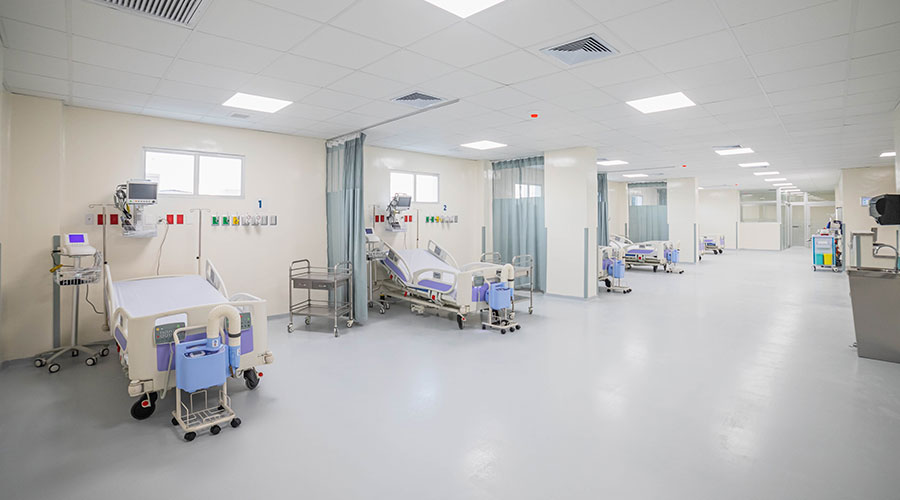ATLANTA — In some sense, designers of health care facilities must follow the same creed as health care professionals: to first do no harm. A newly revised standard for ventilation of health care facilities, can help designers by providing the minimum requirements for the design of ventilation systems for health care facilities to provide environmental control for comfort, as well as infection and odor control.
ANSI/ASHRAE/ASHE Standard 170-2013, Ventilation of Health Care Facilities, was written by ASHRAE and the American Society for Healthcare Engineering (ASHE). When the standard was first published in 2008, it was the first American National Standards Institute (ANSI) standard in the nation to specifically address ventilation in health care facilities.
“Without high-quality ventilation in health care facilities, patients, health care workers and visitors can become exposed to contaminants through normal respiration of particles in the air.” Paul Ninomura, chair of the 170 committee, said. “Ventilation systems and designs for health care facilities are intended to provide a comfortable environment for patients, health care workers and visitors while diluting, capturing and exhausting airborne contaminants including potentially infectious airborne agents.”
Standard 170 has been in constant maintenance since 2008 and the past five years have provided an opportunity to review and further improve it. The revised standard features updates, changes and clarifications dealing with humidity, ducted returns, recirculating rooms units and duct lining, to name just a few refinements.
One trend that almost all classes of buildings have seen on the rise lately has been energy efficiency. Health care facilities can be energy extensive buildings and energy recovery can provide significant savings. Provisions for the application of energy recovery are now specifically addressed in 170-2013. However, as the standard stipulates, if energy recovery systems are utilized, the systems cannot allow for any cross-contamination of exhaust air back to the supply airstream. Run around coils are just one example of a system that is permitted, according to Ninomura.
The standard also addresses some issues that may reduce costs to build and operate health care facilities. Standard 170 allows relative humidities as low of 20 percent for some rooms. This may result in smaller capacity of humidification equipment, lower operating costs and reduced maintenance costs. The standard permits some use of plenum returns in outpatient facilities, which in turn may result in lower construction cost and operating costs.
Additionally, some hospitals are interested in utilizing displacement ventilation to reduce operating costs. The standard addresses the application of displacement ventilation within patient rooms.
Poorly ventilated health care facilities may increase the concentration of airborne contaminants including fungi or mold, which may cause allergic responses in even healthy workers and occupants. Considering the various occupancies and patient populations, great care must be taken in the design of health care ventilation systems.
The cost of ANSI/ASHRAE/ASHE Approved Standard 170-2013, Ventilation of Health Care Facilities, is $58 ($48, ASHRAE members). To order, contact ASHRAE Customer Contact Center at 1-800-527-4723 (United States and Canada) or 404-636-8400 (worldwide), fax 678-539-2129, or visit www.ashrae.org/bookstore.
ASHRAE, founded in 1894, is a building technology society with more than 50,000 members worldwide. The Society and its members focus on building systems, energy efficiency, indoor air quality, refrigeration and sustainability. Through research, standards writing, publishing, certification and continuing education, ASHRAE shapes tomorrow’s built environment today.

 Waco Family Medicine Achieves Savings and Bold Design with Wood Selections
Waco Family Medicine Achieves Savings and Bold Design with Wood Selections Alleged Ransomware Administrator Extradited from South Korea
Alleged Ransomware Administrator Extradited from South Korea Design Plans Unveiled for New Intermountain St. Vincent Regional Hospital
Design Plans Unveiled for New Intermountain St. Vincent Regional Hospital Ground Broken on New Pediatric Health Campus in Dallas
Ground Broken on New Pediatric Health Campus in Dallas Pre-Construction Strategies for Successful Facilities Projects
Pre-Construction Strategies for Successful Facilities Projects